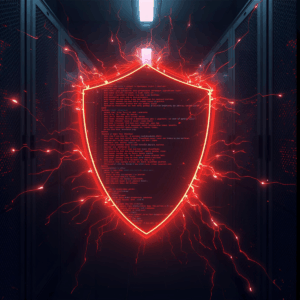Ransomware has evolved from a disruptive annoyance into one of the most profitable and dangerous forms of cybercrime. Modern ransomware groups now operate like well-funded corporations – offering Ransomware-as-a-Service (RaaS), leveraging AI-driven phishing campaigns, and combining encryption with data theft and extortion.
In 2025, no organization can afford to treat ransomware prevention as an IT-only issue. It’s a business resilience priority – one that requires layered, proactive defense. Here’s what modern enterprises are doing to stay ahead.
1. Assume Breach: Focus on Detection and Response
The first mindset shift is crucial: prevention alone is not enough. Even the best perimeter defenses can fail. Leading organizations now operate under an “assume breach” model – designing their networks and response processes to detect and isolate ransomware before it spreads.
Defenses to prioritize:
Endpoint Detection and Response (EDR/XDR): Tools that monitor behavior, not just signatures, to spot unusual encryption activity in real time.
Zero Trust Architecture: Continuous verification of users and devices prevents lateral movement once a system is compromised.
24/7 SOC Monitoring: Whether in-house or via an MDR provider, continuous oversight is key to rapid containment.
2. Backup and Recovery — But Smarter
Backups are still your last line of defense – but traditional backup strategies alone are no longer enough. Attackers increasingly target backups directly or infiltrate systems months before launching the payload, corrupting stored data silently.
Modern best practices include:
Immutable Backups: Backups that can’t be altered or deleted, even by administrators.
Air-Gapped or Cloud-Isolated Storage: Ensures ransomware can’t reach backup repositories.
Granular Recovery Testing: Regularly simulate ransomware incidents to verify restoration time and data integrity.
A modern cyber protection platform (like Acronis Cyber Protect) combines backup, anti-malware, and monitoring in one ecosystem, allowing instant rollback to clean states.
3. Employee Awareness and Phishing Defense
Human error remains the top entry vector – especially through phishing and business email compromise (BEC). Even as AI deepfakes and spear-phishing become more convincing, training remains a frontline defense.
Key tactics:
Conduct regular phishing simulations and adaptive training.
Use AI-powered email security tools that detect suspicious patterns and sender behavior.
Deploy multi-factor authentication (MFA) universally to reduce credential-based breaches.
When users know how to spot anomalies – and security systems back them up – ransomware’s most common entry point narrows significantly.
4. Patch and Update Everything, Relentlessly
Many ransomware campaigns exploit old, unpatched vulnerabilities in operating systems, VPN appliances, and third-party software.
An unpatched remote access service or outdated plugin can become a gateway for catastrophe.
Best practices:
Implement automated patch management across all endpoints and servers.
Track and audit vulnerabilities with risk-based prioritization (not just patch volume).
Eliminate unsupported or legacy software where possible.
This is one of the simplest – yet most often overlooked – ransomware defenses.
5. Segmentation and Access Control
A flat network is ransomware’s best friend. By separating critical systems and applying least-privilege access, you can drastically reduce the blast radius of an infection.
Strategies include:
Network segmentation: Isolate sensitive environments (finance, production, R&D).
Privileged Access Management (PAM): Rotate credentials and monitor admin sessions.
Micro-segmentation tools: Apply granular policies down to the workload or container level.
Even if an attacker gains entry, segmentation prevents full compromise.
6. Harnessing AI for Defense
 AI isn’t just a weapon for attackers – it’s also transforming defense.
AI isn’t just a weapon for attackers – it’s also transforming defense.
Modern cybersecurity tools now use machine learning to detect patterns and predict potential ransomware campaigns before they strike.
Examples include:
Behavioral baselining: Identifying anomalies like rapid file encryption.
Predictive analytics: Detecting early indicators of compromise (IOCs).
AI-assisted triage: Helping SOC teams filter false positives faster.
As attacks grow more automated, defense must be equally intelligent and adaptive.
7. Regular Incident Response Planning
Even with perfect defenses, preparedness is key.
Organizations that recover quickly from ransomware incidents share one trait: a tested and rehearsed Incident Response Plan (IRP).
Your plan should cover:
Roles, responsibilities, and escalation procedures
Communication protocols (internal and external)
Coordination with insurers, legal, and regulators
Post-incident forensic review
Simulation exercises and tabletop drills ensure that when – not if – an attack happens, response is swift and confident.
The Final Line: Integrate and Simplify
Ransomware defense is strongest when tools and processes work together.
Too many organizations juggle siloed security, backup, and monitoring systems, creating gaps.
The best results come from integrated cyber protection platforms – where prevention, detection, backup, and recovery coexist in a unified system.
That’s the real evolution of ransomware defense in 2025: moving from reactive recovery to continuous resilience.

